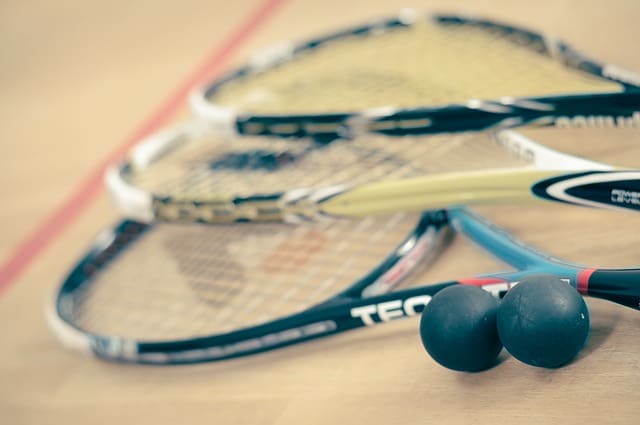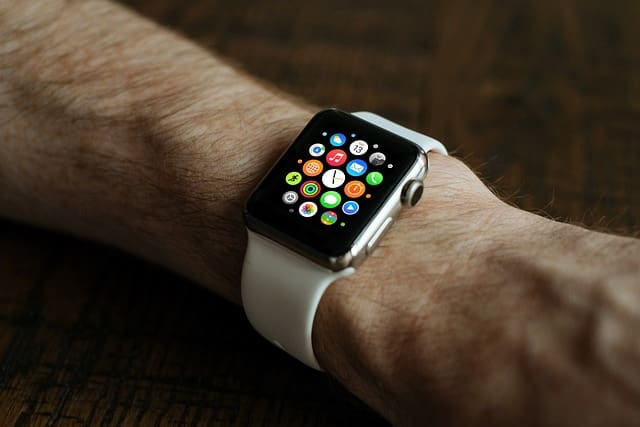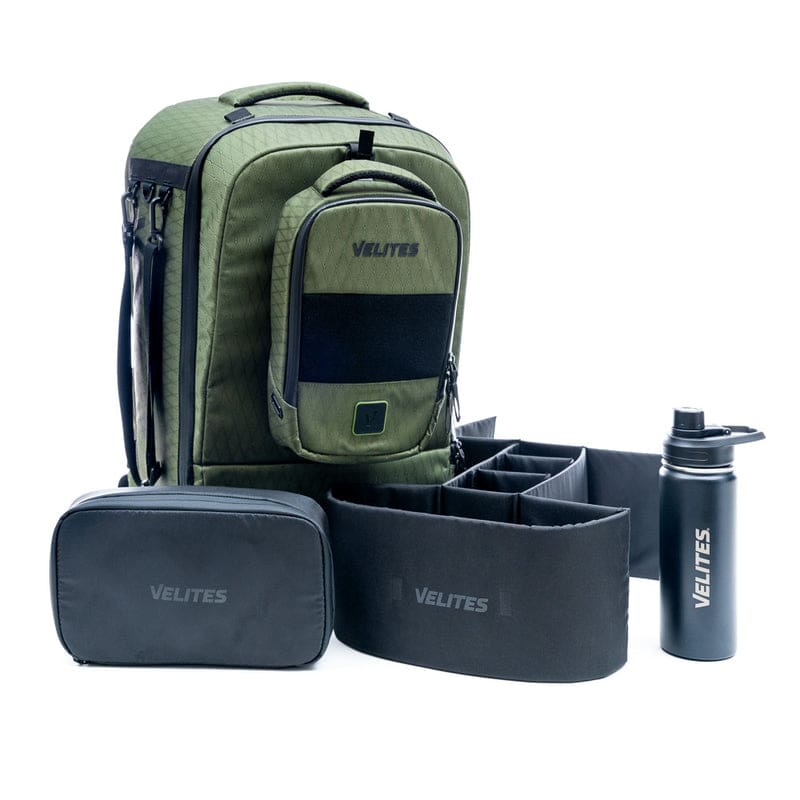Sports
Top 10 High-Tech Wearables That Every Athlete Should Know About


As technology continues to advance, high-tech wearables have become an integral part of an athlete’s training and performance enhancement. From smart shoes to biometric shirts and compression garments with sensors, the market is flooded with an array of innovative products designed to take athletic performance to the next level.
These wearables not only provide real-time data on various aspects of an athlete’s physiology but also offer insights that were once only accessible in a lab setting. With the potential to revolutionize training methods and prevent injuries, these top 10 high-tech wearables are essential for athletes looking to optimize their performance and gain a competitive edge in their respective fields.
Key Takeaways
- High-tech wearables offer comprehensive performance tracking and optimization, allowing athletes to monitor and improve various metrics such as stride length, foot strike, balance, heart rate, and muscle activity.
- Hydration monitoring wearables and smart water bottles help athletes track their fluid intake and electrolyte levels, optimizing hydration for peak performance. Reminder alerts ensure athletes stay adequately hydrated.
- Injury prevention wearables, including impact-sensing headgear, posture correctors, and smart socks, help athletes minimize the risk of injuries by monitoring head impacts, reminding them to maintain correct posture, and analyzing foot strikes and technique.
- High-tech wearables also aid in recovery and post-workout strategies by providing real-time data on oxygen levels, tracking recovery metrics like heart rate variability and sleep patterns, and offering insights into post-training recovery strategies. These wearables empower athletes to make immediate adjustments and personalize their training experiences.
Smart Shoes
Smart shoes are an innovative and high-tech footwear option designed to enhance athletic performance and provide real-time feedback to athletes. These shoes are equipped with advanced sensors and technology that track various metrics such as stride length, foot strike, and balance. The real-time data collected by smart shoes offers athletes valuable insights into their performance, allowing them to make immediate adjustments to improve their technique and prevent injuries.
Additionally, smart shoes can provide feedback on factors such as cadence and ground contact time, helping athletes optimize their running efficiency.
The integration of smart shoes with mobile apps and wearable devices enables athletes to monitor their progress over time, set personalized goals, and track their performance trends. This seamless connectivity empowers athletes to take control of their training and make informed decisions to enhance their overall athletic abilities.
Furthermore, smart shoes are designed to offer a balance between performance and comfort, making them suitable for a wide range of athletic activities. With the freedom to access real-time feedback and optimize their training, athletes can maximize their potential and achieve their fitness goals with confidence.
Biometric Shirts
Biometric shirts have revolutionized athletic wear by incorporating advanced sensor technology to monitor vital signs and performance metrics for athletes. These high-tech shirts are designed to provide athletes with real-time data on their heart rate, breathing patterns, and even muscle activity. The incorporation of biometric sensors directly into the fabric allows for a seamless and non-intrusive monitoring experience, giving athletes the freedom to focus on their performance without being hindered by bulky equipment.
The biometric shirts use innovative textile technology to ensure comfort and freedom of movement, making them ideal for a wide range of athletic activities. Athletes can now gain valuable insights into their physical condition and exertion levels, allowing for more informed training decisions and performance optimizations. The data collected by the biometric shirts can be analyzed to track progress over time, identify areas for improvement, and prevent overexertion or injury.
With biometric shirts, athletes have the freedom to train smarter and achieve their goals more efficiently while maintaining comfort and flexibility. These high-tech wearables are redefining the way athletes approach their training and performance monitoring, offering a new level of insight and control.
Compression Garments With Sensors
The integration of sensor technology into compression garments has enhanced the monitoring capabilities available to athletes during their training and performance activities. These high-tech wearables offer a range of benefits, providing athletes with valuable insights into their body’s performance and recovery processes.


Here are some key features and advantages of compression garments with sensors:
- Biometric Monitoring: Compression garments integrated with sensors can track various biometric data such as heart rate, respiration rate, and body temperature in real-time, allowing athletes to optimize their training and performance.
- Muscle Activity Analysis: Advanced sensors embedded in compression garments can monitor muscle activity, providing athletes with detailed information on muscle fatigue and performance during workouts and competitions.
- Recovery Optimization: These garments can track recovery metrics, such as lactic acid buildup and muscle oxygenation levels, helping athletes to tailor their recovery strategies for maximum benefit.
- Performance Feedback: By collecting and analyzing data during training and competition, compression garments with sensors can provide athletes with actionable insights to improve their performance and prevent injuries.
These high-tech wearables represent a significant advancement in athletic monitoring and performance optimization, offering athletes the freedom to push their limits while maintaining a focus on safety and efficiency.
Hydration Tracking
As athletes strive for peak performance, staying properly hydrated is essential.
High-tech wearables now offer advanced solutions for tracking hydration. This includes smart water bottles that monitor fluid intake, electrolyte level monitoring to ensure a balanced hydration profile, and hydration reminder alerts to prompt athletes to drink at optimal intervals.
These innovations aim to help athletes maintain their performance by ensuring they stay adequately hydrated throughout their training and competitions.


Smart Water Bottles
Athletes can benefit from the advanced technology of smart water bottles, which offer hydration tracking capabilities to help optimize their performance and health. These high-tech water bottles are equipped with sensors and smart features that enable athletes to monitor their water intake and stay adequately hydrated throughout their training sessions and competitions.
Here are some key features of smart water bottles:
- Hydration Tracking: Smart water bottles track water consumption and provide reminders to drink water at regular intervals.
- Integration with Fitness Apps: Many smart water bottles can sync with fitness apps to provide a comprehensive overview of hydration and workout data.
- Customizable Goals: Users can set personalized hydration goals based on their activity level and individual needs.
- Temperature Control: Some smart water bottles can maintain the temperature of the water, providing athletes with refreshing drinks during and after workouts.
Electrolyte Level Monitoring
Electrolyte level monitoring builds upon the hydration tracking capabilities of smart water bottles, offering athletes the ability to track and optimize their electrolyte intake for peak performance and overall health.
This technology provides real-time data on electrolyte levels in the body through non-invasive sensors, allowing athletes to make informed decisions about their hydration and nutrition.
By monitoring electrolyte levels, athletes can prevent dehydration, muscle cramps, and fatigue, which are often caused by imbalances in key electrolytes such as sodium, potassium, and magnesium.
![]()
![]()
With this information, athletes have the freedom to customize their hydration strategies based on their individual needs, training intensity, and environmental conditions.
Electrolyte level monitoring empowers athletes to maintain optimal performance and well-being, enhancing their freedom to push their limits and achieve their goals.
Hydration Reminder Alerts
Utilizing advanced sensor technology, hydration reminder alerts offer athletes a proactive approach to maintaining optimal fluid intake throughout their training and performance activities. These high-tech wearables not only track hydration levels but also provide timely reminders to ensure athletes stay adequately hydrated.
Here’s why every athlete should know about hydration reminder alerts:
- Customizable Alerts: Athletes can set personalized reminders based on their specific hydration needs and training intensity.
- Real-Time Monitoring: These wearables provide real-time data on hydration levels, allowing athletes to make immediate adjustments to their fluid intake.
- Integration with Fitness Apps: Many hydration reminder alerts seamlessly integrate with popular fitness apps, providing a comprehensive overview of an athlete’s overall health and performance metrics.
- Long Battery Life: With extended battery life, athletes can rely on these wearables for continuous hydration tracking without frequent recharging.
Muscle Oxygen Monitor
In the realm of high-tech wearables for athletic performance, the muscle oxygen monitor stands out as a crucial tool for optimizing training and recovery.


This innovative device provides real-time data on the oxygen levels in the muscles, offering valuable insights into how effectively the muscles are utilizing oxygen during physical activity.
By tracking muscle oxygenation, athletes can make informed decisions about the intensity and duration of their workouts, ensuring they are training at the optimal level for performance gains while minimizing the risk of overexertion.
Additionally, monitoring muscle oxygen levels can aid in assessing post-workout recovery, allowing athletes to adjust their recovery strategies as needed.
With this data, athletes can fine-tune their training regimens to improve endurance, maximize performance, and reduce the risk of injury.
The muscle oxygen monitor empowers athletes to take control of their training and recovery, providing the freedom to make evidence-based decisions that can lead to significant improvements in overall athletic performance.


Impact Sensing Headgear
The muscle oxygen monitor, essential for optimizing athletic training and recovery, is complemented by the advancement of impact sensing headgear in the realm of high-tech wearables for athletes.
Impact sensing headgear is revolutionizing the way athletes approach safety and performance, providing valuable insights into head impacts during sports and training. This technology is crucial in preventing serious head injuries and allowing athletes to make informed decisions about their health and well-being.
Here are four key features and benefits of impact sensing headgear:
- Real-Time Impact Monitoring: Impact sensing headgear provides real-time monitoring of head impacts, alerting athletes and coaches to potential risks and allowing for immediate intervention when necessary.
- Data Analysis and Reporting: The headgear collects data on the frequency and intensity of impacts, enabling athletes and their support teams to analyze patterns and make informed decisions about training and gameplay strategies.
- Injury Prevention: By identifying and addressing potential head injury risks, impact sensing headgear plays a critical role in injury prevention, ultimately supporting the long-term health and performance of athletes.
- Enhanced Safety Awareness: Athletes gain heightened awareness of the impact forces they are experiencing, empowering them to adjust their techniques and behaviors to minimize risks and prioritize their safety.
Impact sensing headgear represents a significant advancement in athlete safety and performance, offering a proactive approach to protecting the well-being of individuals engaged in sports and athletic activities.
Posture Corrector
Posture correction devices have become increasingly popular among athletes and fitness enthusiasts seeking to improve their alignment and performance.


As wearables designed to promote proper posture, these devices are particularly valuable for individuals who spend extended periods sitting or engaging in repetitive movements.
The posture corrector works by gently reminding the wearer to maintain a correct posture, supporting the natural alignment of the spine and shoulders.
By promoting a more upright position, these devices help reduce strain on the back and neck, leading to improved overall comfort and reduced risk of injury.
Athletes can benefit from posture correctors during training sessions and competitions, as maintaining proper alignment can enhance breathing, circulation, and overall physical performance.
Additionally, improved posture can contribute to a more confident and commanding presence, which is particularly advantageous in competitive sports.
![]()
![]()
With the freedom to move and perform without the distraction of poor posture, athletes can focus on optimizing their athletic abilities and achieving their fitness goals.
Smart Socks
Athletes and fitness enthusiasts are increasingly turning to smart socks as a high-tech wearable solution to enhance their performance and training experience. Smart socks are designed to provide real-time feedback and valuable insights into an athlete’s performance, helping them make adjustments to their training and technique. These innovative wearables offer a range of features tailored to meet the needs of athletes, including advanced tracking capabilities, comfort, and durability.
Here are four key features of smart socks that make them a valuable addition to any athlete’s training arsenal:
- Pressure Sensors: Smart socks are equipped with pressure sensors that analyze an athlete’s foot strike and provide data on their running or walking technique.
- Moisture-Wicking Technology: The socks are designed with moisture-wicking technology to keep the feet dry and comfortable during intense workouts, reducing the risk of blisters and discomfort.
- Real-Time Feedback: Smart socks provide real-time feedback on an athlete’s performance, including metrics such as stride length, cadence, and foot landing angle.
- Compatibility with Training Apps: These socks can sync with training apps to track performance over time, allowing athletes to analyze their progress and make informed decisions about their training regimen.
Performance Analytics
Athletes today have access to unprecedented levels of performance analytics through high-tech wearables. These devices provide data-driven training insights, allowing athletes and coaches to make informed decisions based on real-time performance tracking and advanced sports metrics.
The integration of performance analytics into training regimens has revolutionized the way athletes optimize their performance and achieve their goals.
![]()
![]()
Data-Driven Training Insights
Leveraging advanced data analytics, high-tech wearables provide athletes with invaluable insights into their performance, enabling them to make informed training decisions and optimize their athletic potential.
These data-driven training insights encompass a range of crucial aspects, including:
- Biometric Monitoring: High-tech wearables track vital signs such as heart rate, oxygen saturation, and sleep patterns, providing comprehensive data for performance optimization.
- Movement Analysis: Wearables offer detailed analysis of an athlete’s movements, identifying inefficiencies and areas for improvement in technique and form.
- Workload Management: Athletes can monitor their training load, helping to prevent overtraining and reduce the risk of injury.
- Recovery Tracking: Wearables provide insights into an athlete’s recovery process, facilitating informed decisions on rest periods and recovery strategies.
These insights empower athletes to tailor their training regimens based on objective data, leading to enhanced performance and reduced injury risk.
Real-Time Performance Tracking
High-tech wearables not only provide athletes with data-driven training insights but also offer real-time performance tracking through advanced performance analytics, enabling athletes to monitor their immediate performance metrics during training and competition.
These wearables utilize sensors to capture real-time data on metrics such as heart rate, speed, distance, and even biometric information like oxygen levels and sweat rate. This real-time data empowers athletes to make immediate adjustments to their training or performance, allowing for on-the-fly optimization and enhancing overall efficiency.


Additionally, the availability of real-time performance tracking fosters a sense of freedom, as athletes can make informed decisions in the moment, leading to more personalized and effective training and competition experiences.
The integration of real-time performance tracking into high-tech wearables represents a significant advancement in athlete empowerment and performance optimization.
Advanced Sports Metrics
Utilizing cutting-edge technology, high-tech wearables incorporate advanced sports metrics and performance analytics to provide athletes with comprehensive insights into their training and competition performance. These advanced metrics go beyond basic tracking and offer athletes in-depth analysis to optimize their performance.
Here are four key aspects of advanced sports metrics:
- Biomechanical Analysis: Wearables can provide detailed data on an athlete’s biomechanics, including stride length, foot strike patterns, and joint angles, helping them improve technique and reduce the risk of injury.
- Metabolic Tracking: High-tech wearables can measure an athlete’s metabolic rate, oxygen consumption, and calorie expenditure, offering valuable insights into energy expenditure and optimal fueling strategies.
- Recovery Monitoring: Advanced wearables track metrics such as heart rate variability and sleep patterns to assess an athlete’s recovery status and guide post-training recovery strategies.
- Performance Prediction: By analyzing various performance metrics, wearables can provide predictive insights into an athlete’s potential performance, helping them set realistic goals and tailor training programs for improvement.
Injury Prevention Wearables
Athletes are increasingly turning to wearable technology designed to minimize the risk of injuries during training and competition. Injury prevention wearables offer athletes the freedom to push their limits without the fear of sidelining injuries. These high-tech wearables employ cutting-edge sensors and advanced algorithms to monitor an athlete’s movements and provide real-time feedback to prevent overexertion or incorrect form that could lead to injuries.


One example of such technology is the use of smart compression clothing embedded with sensors that track muscle fatigue and provide insights into an athlete’s biomechanics. These wearables can alert athletes when they are at risk of overtraining or when their form is compromised, allowing them to make immediate adjustments to prevent potential injuries.
Additionally, wearable devices such as smart insoles and ankle bands are designed to analyze an athlete’s gait and provide feedback to correct imbalances or improper foot strike patterns that could lead to overuse injuries.
Frequently Asked Questions
How Do Smart Shoes Differ From Regular Athletic Shoes, and What Specific Features Do They Offer for Athletes?
Smart shoes differ from regular athletic shoes by integrating technology to track performance metrics such as speed, distance, and foot strike. These shoes offer features like real-time coaching, gait analysis, and personalized training plans, providing valuable insights for athletes.
Can Biometric Shirts Be Worn During Intense Workouts and How Do They Withstand Sweat and Movement?
Biometric shirts are designed to withstand intense workouts, effectively managing sweat and movement. Their advanced fabric technology allows for moisture-wicking and flexibility, ensuring comfort and accurate biometric data collection. These shirts are ideal for athletes seeking performance-enhancing wearables.
Are Compression Garments With Sensors Suitable for All Types of Athletes, or Are There Specific Sports or Activities They Are Best Suited For?
Compression garments with sensors are suitable for various athletes, but their effectiveness can vary based on specific sports or activities. They may offer the most benefits for endurance sports, such as running and cycling, where monitoring biometric data and muscle recovery is crucial.


How Accurate Are Hydration Tracking Wearables in Monitoring an Athlete’s Fluid Intake and How Do They Provide Real-Time Feedback?
Hydration tracking wearables provide accurate monitoring of an athlete’s fluid intake, offering real-time feedback through sensor technology. By measuring sweat levels or analyzing hydration patterns, these devices help athletes optimize their performance and prevent dehydration-related issues during training and competitions.
What Are the Potential Benefits of Using Muscle Oxygen Monitors for Athletes, and How Do They Contribute to Performance Improvement?
Muscle oxygen monitors offer athletes real-time insights into muscle oxygenation levels, aiding in optimizing training intensity and recovery. By tracking oxygen utilization, athletes can fine-tune their workouts, enhance endurance, and minimize the risk of overtraining, ultimately contributing to performance improvement.


Hi, I’m Kyle Rivera, a news journalist and blog editor with the Daily Evening News. A TCU alum with a flair for storytelling, I spend my days uncovering impactful stories and my evenings exploring the realms of yoga, cycling, and whimsically bad poetry.
Travel is my escape; I’ve trekked from Tokyo’s neon lights to Iceland’s tranquil vistas. But no journey is complete without Mogli, my Golden Retriever, who’s redefining his breed standards in the most charming ways.
I love connecting with fellow travelers, yogis, cyclists, and anyone who enjoys a laugh at my poetic attempts. If you’re into stories that inspire, travel escapades, or just want to see what Mogli and I are up to, I’d love to hear from you on Instagram or Facebook. Let’s share tales and tips from around the globe!

